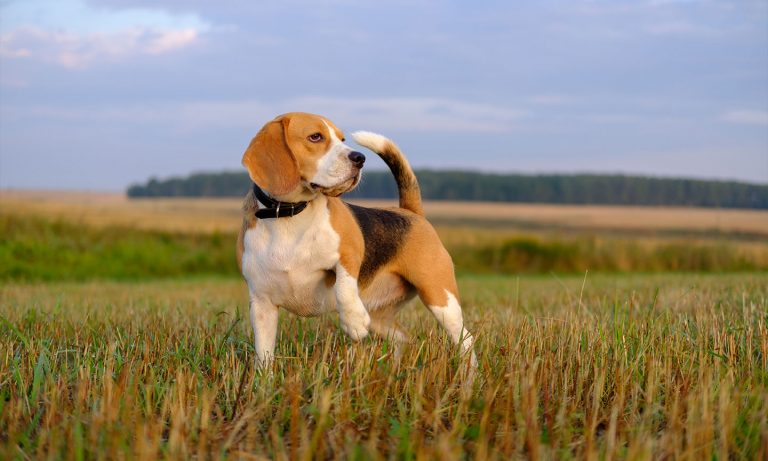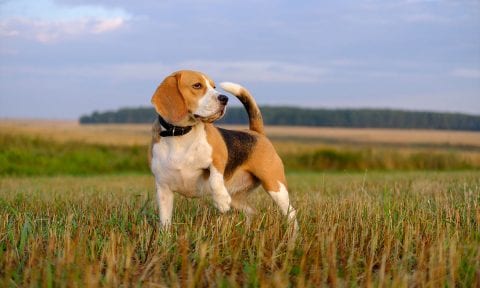Harrier vs Beagle

Breed Snapshot
Best For
Harriers are best for active and experienced pet parents and families who will be with them for most of the day. They need lots of room to run off-leash, so a home with a fenced...
Harriers are best for active and experienced pet parents and families who will be with them for most of the day. They need lots of room to run off-leash, so a home with a fenced yard is ideal.
Harrier Temperament
Lace up your sneakers because you’ve just met your new running buddy. This dog is ready to mix and mingle like it’s a 26.2-mile race day every day. And make sure you keep up the pace because the Harrier can get a bit stir-crazy and destructive if they don’t ex...
Lace up your sneakers because you’ve just met your new running buddy. This dog is ready to mix and mingle like it’s a 26.2-mile race day every day. And make sure you keep up the pace because the Harrier can get a bit stir-crazy and destructive if they don’t exercise enough.
This hunting breed loves family life, and entertaining at home is their favorite. While the Harrier is friendly and totally welcomes a crowd— adults, dogs, older kids—they may be a little stand-offish with strangers. You’ll want to supervise playtimes with very young kids because Harriers may knock small kids over in their rambunctious play. Start socialization while they’re young to help them get used to being around new people. Watch out for any creature that could be mistaken for prey, including bunnies, cats and hamsters—the Harrier’s next chase is never too far away.
Harriers aren’t particularly clingy, but they’re pack dogs, which means they’re bred to work as a team and not by themselves. It’s best to be with them most of the day or have another dog at home for them to play with. Give them plenty to keep them occupied, or they might bark, dig, chew things and attempt a jailbreak to alleviate their boredom. Try gifting them chew toys, fetch toys, brain games and maybe even a Jolly Pet ball (they’re great for herding types, but some Harriers love ’em, too).
Since they love to roam (or escape, given half the chance), keep your dog safe by using a leash when not in enclosed spaces and ensuring off-leash areas are really enclosed.
As part of the Hound group, the Harrier was originally bred to hunt hares, so they love a heady mix of physical activity, mental stimulation, tracking and running with a pack. This dog is always up for a workout session at the park to find new friends.
Harrier Traits

Breed Snapshot
Best For
Beagles, small and friendly, thrive on activity and companionship. With an affectionate nature and keen sense of smell, they make excellent family pets. They're ideal for those seeking a playful and energetic canine friend who...
Beagles, small and friendly, thrive on activity and companionship. With an affectionate nature and keen sense of smell, they make excellent family pets. They're ideal for those seeking a playful and energetic canine friend who flourishes with love and outdoor adventures.
Beagle Temperament
The Beagle’s temperament is generally joyful, determined and adventurous. They’re spunky dogs who typically get along well with others, and their curious personality means they love to play and explore. Couch potatoes they are not! In fact, they need a lot of exercise and thrive when given...
The Beagle’s temperament is generally joyful, determined and adventurous. They’re spunky dogs who typically get along well with others, and their curious personality means they love to play and explore.
Couch potatoes they are not! In fact, they need a lot of exercise and thrive when given a job to do. They were originally bred to track and hunt game, and you’ll often see them with their nose to the ground. At times they can be too driven by scents. Don’t be surprised if they smell something interesting and take off!
Known for their intelligence, a bored Beagle may get themselves into trouble. Don’t worry—Beagles are happy to tell you when they need more stimulation with their attention-getting vocalizations. A cross between a bark and a howl, the unmistakable Beagle “baying” is sharper than a bark but not as drawn out as a howl. Beagles love to join in when they hear other dogs howling or when they want to express themselves with their “Beagle noises.”
Agility training, scent work or tracking classes might be good activities to explore with these smart, strong-willed dogs. (Psst, the National Beagle Club is a good resource for events and other activities for this breed.)
While a Beagle puppy can be mouthy and chew things they shouldn’t (just like any other puppy!), the Beagle breed isn’t expected to have aggressive tendencies as an adult. These social, family dogs get along well with children and are great for active families. And since they were originally bred for hunting in packs, they also do well with other dogs, although they may need more time to adjust to cat households.




